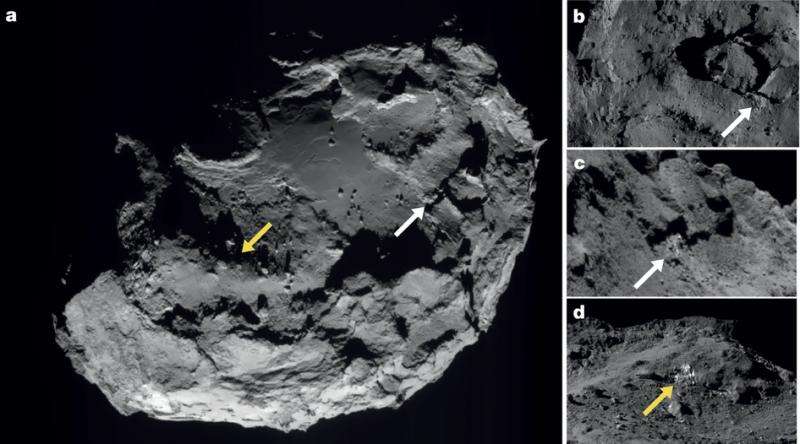For the first time in history, astronomers have solid clues of water ice on a comet, confirming what many theories already claimed.

Thanks to instruments aboard the European Space Agency’s Rosetta orbiter, we now know that the comet 67P/Ciuriumov-Gherasimenko definitely has water on it. Rosetta started its mission in 2004, and in November 2014, its lander Philae attached itself to the comet. Unfortunately, Philae landed in the shadow of a nearby cliff or crater wall and canted at an angle of around 30 degrees. This made it unable to adequately collect solar power, and it lost contact with Rosetta when its batteries ran out. The team had to wait for the comet to move until light reached Philae and powered it again – but it was worth it.
“First, not finding ice was a surprise; now, finding it is a surprise,” said Murthy Gudipati a planetary scientist at the Jet Propulsion Laboratory in La Canada Flintridge, Calif., and an author on the paper. “It is exciting because now we are starting to understand the upper dynamic layers of the comet and how they evolved.”
Researchers knew that the comet’s nucleus is dominated by water, but hadn’t yet spotted water on its surface. The surface, like that of most comets in our solar system, is dominated by dark organic materials that appear almost black.
Analysis also revealed that water ice particles came in two sizes. The smaller grains are micrometer-sized. They’re associated with a thin layer of frost that forms as a function of the comet’s rotation – freezing and condensing as the temperature rises or drops.
The larger grains are more complicated to understand, and there is still no clear indication as to how they form. The working hypothesis seems to be that water ice vaporizes as the comet arrives closer to the sun and then moves downward, to the deeper layers, where it condenses again.
“Keep in mind that comets are very porous, like cotton candy,” Gudipati said. “Seventy percent of this comet is a void, and because of that, the heat from the surface does not go that deep.”
Journal Reference: G. Filacchione et al. Exposed water ice on the nucleus of comet 67P/Churyumov–Gerasimenko, Nature (2016). DOI: 10.1038/nature16190






